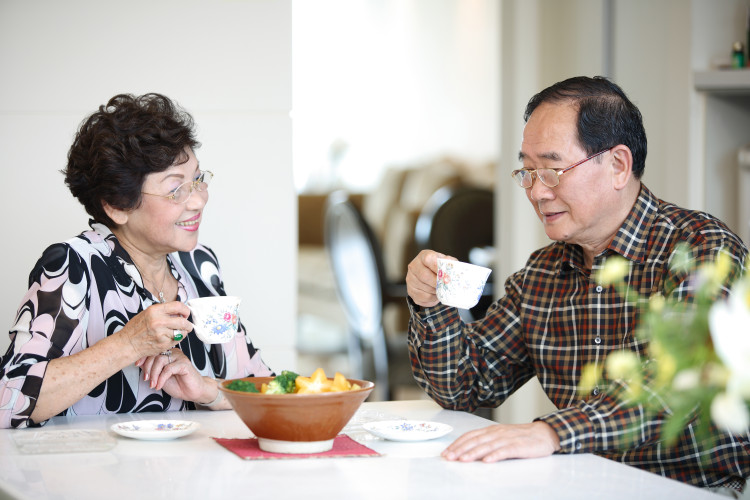China has become an ageing society, which offers immense opportunities for foreign senior care providers, but a lack of clear government guidelines and other misunderstandings of the market may hinder some investment plans, so it is of great importance to understand this market before entering.
Market background & Current Situation
This paragraph gives a quick insight into the elderly market in China using figures with its analysis.
In 2014, China’s National Bureau of Statistics announced that the proportion of people who are 65 year old and over had reached 9.6% , including 62,646,075 males and 68102,830 females. The study projected that this ratio will reach 64 elderly for every 100 workers by 2025. In comparison, the United States has approximately 20 retirees for every 100 workers and is projected to have 33 retirees for every 100 workers by 2050. Today, government funding only covers a small percent of seniors in need of care, who cannot otherwise pay for their own care. Historically, adult children take care of their parents and grandparents, but this is Becoming less and less common because of financial and geographical constraints. As a result of China’s one child policy, what’s referred to as the “2-4-8 problem” is starting to happen and will continue to be a problem for the foreseeable future: two adult children have four parents and eight grandparents to care for. In addition, China’s massive rural to urban migration has left in its wake elderly parents and grandparents whose geographic distance from their children means China’s traditional cross-generational housing model will no longer be an option.
Estimation of Scale of Market
The market represents real potential growth in China. In China, the number of the total nursing home beds covers only 2% of the aging population, 18% of the disabled aging population. Only 1.3% of the elderly population lives in the government funded nursing houses. According to Chinese authorities, there is a need for an additional 3.4 million hospital and nursing home beds dedicated to senior care over the next five years alone, and market size is expected to grow exponentially. The market of housekeeping for the elderly is expected to expand from 99 billion to 326 billion in the next 35 years. Meanwhile, the consuming ability of the aging population is expected to increase greatly because of the rise of personal income (retirees are richer than before).
Moreover, 18.9% of elderly population requires professional treatment, however, 15.9% of practitioners lack senior-focused professional training and 76.9% only receive fundamental training. For these reasons, the government is expected to rely on the elderly care commercial equity. The Chinese market is welcoming a commercial solution to the problem of demographic strain and several foreign senior care operators have already answered the call, eager to prove they can export their model to China. However, a number of challenges await senior care providers upon entry into the Chinese market.
The segmentation of the market
The evolution of this specific market in China can be seen within those figures.
There are 4 different realms of elderly care business.
- Daily Consuming which includes specially designed food, Garments and Decorations like cosmetics, clothes, dentures, wigs, etc. and Sanitation: Paper Diaper.
- Medical Care involves Medical Treatment, Medical Health Protection, Medical Facility and Palliative Care.
- Relaxation & Entertainment. It is about Tourist industry for the elder, Cruises Designed for the elder, Lottery Designed for the elder, Mobile Phone Designed For the Elder and so on.
- Financial Guarantee which includes Life Insurance, Assets Management, Nursing Homes, Endowment Real Estate and Hospitals.
Consuming Features of the Elderly Population have also been researched and analyzed as follows:
Recent research showed that older consumers were more diverse and more complex than previously believed. According to the research, consuming psychology of the elderly population could be divided into six parts:
- Small Real Estate Demand : consume low-price commercial housing for personal use and tends to consume high-end commercial housing for their descendants
- Lack of Walking Competency : rely on e-commerce platforms and mature logistics systems
- Compensatory Consumption : invest more in entertainment and leisure activities which they failed to consume before
- Risk Avoidance : tolerate low income instead of loss
- High Price Sensitivity : focus on practicality and prefer high cost performance products
- Medical & Health Care : tend to invest more money into health care and medical care
The potential development of the market
The Chinese elderly care market shows great potential, however senior care facilities in China remain rare in the country.
The future in China surely lies in the development of a model that doesn’t fit neatly in one that already exists in the U.S or elsewhere, where distinct lines run between independent living, assisted living, and skilled nursing. Instead, the solution for China may be a residential setting of choice that provides some services for additional senior care services, as needed. While the Chinese government is encouraging development of skilled nursing and rehabilitation facilities to serve the highest number of seniors, the elderly that stay outside institutional settings will require other types of care.
Although developers and operators remain unsure of what the market will look like in 10 years, the role of architects and designers is bright. They stand to help educate clients about the importance of specialized design features for the elderly and how design can help market a new industry to a public that knows little of seniors living benefits. To help envision the future of the market, architects and designers must understand the current challenges and how to localize their services to the local demand. It’s a rare and exciting opportunity to help create a new market.
Countries like China, with growing incomes and more elderly people are naturally going to put more energy into developing policies and programs to support seniors. In the close future, it is the affordable senior care facilities that offer the most opportunity for long-term success.
We hope you enjoyed reading this article, and have gained more of an insight about the elderly market in China. If you would like to learn more about this topic or to get more information on another market in China, we, the Daxue Consulting team, are happy to answer any inquiries. Contact us!





